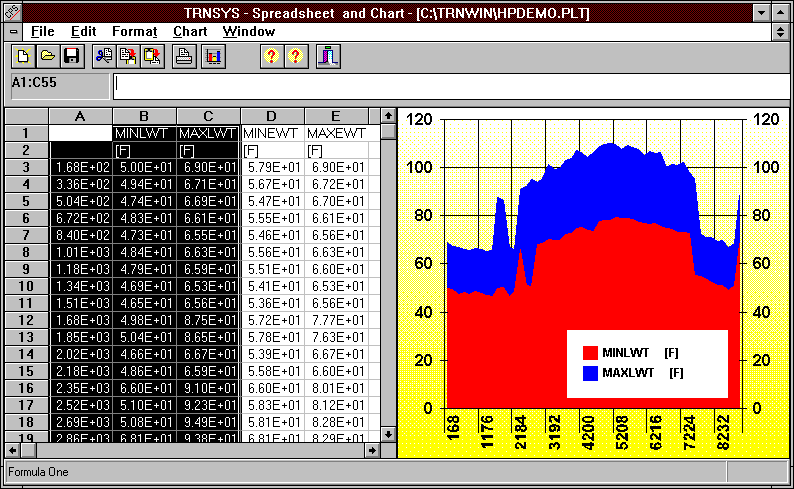
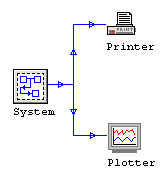


![]()
Using a special TRNSYS component called On-Line, we are able to track up to 10 of the TRNSYS variables during the simulation. For this simulation, the following variables will be plotted as the simulation progresses:
![]()
After the user has finished specifying the parameters of the simulation, a simple menu command will load the TRNSYS simulation engine and begin the simulation calculations. A screen capture of the On-line window from the simulation is shown below. In this window, the user may stop and restart the simulation (by using the TRNSYS menu items), turn on and off the display of selected variables (by clicking on the variable name), zoom into an area of interest on the plot (stop the plot and then use the left mouse button to define a zoom area), and get the values of the variables at a given simulation time (stop the plot and hold the SHIFT key down while moving the mouse).
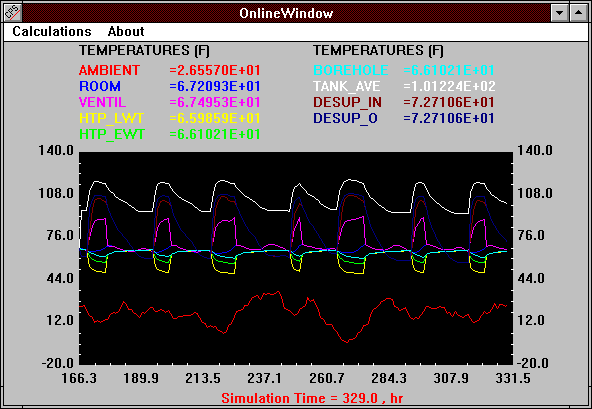
For this simulation, we are also interested in how the maximum and minimum heat pump inlet and outlet temperatures vary throughout the year. The entering heat pump water temperatures are extremely important in designing ground source heat pump applications as water temperatures that are too low or too high can cause equipment performance degradation and failure. Using the TRNSYS periodic integrator component, we are able to keep track of the minimum and maximum values for a user-defined period of time. In this case, we'll keep track of the weekly maximums and minimums. Connecting a TRNSYS printer to the integrator model will allow us to print the weekly results to a file. This file can then be picked up by the plotting device within TRNSYS or in the TRNSYS spreadsheet program for further manipulation.
![]()
Using the plotting device embedded into the TRNSED program, it is very easy to visualize the results from the simulation. The user just creates a new plot by selecting the time period to plot and the variables that should be plotted. See the figure below for an example.
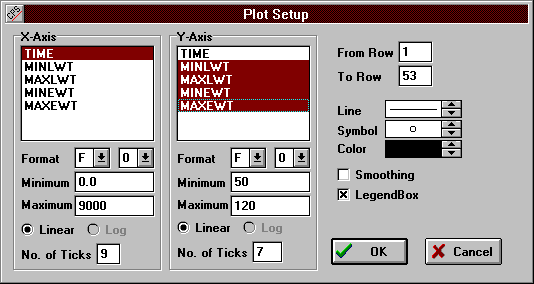
Once the time period and variables have been selected, a plot window is displayed in the TRNSED program. The features of this plot window may be modified by double-clicking on them with the mouse (symbols, grid lines, scales, titles, legends etc.). A sample plot window from the simulation is shown below. The following items were plotted versus time:
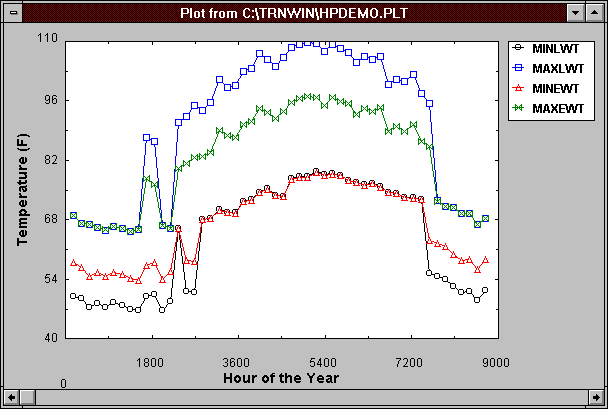
The output file may also be loaded into the TRNSYS Spreadsheet and Plotting program for further manipulation. The spreadsheet is Excel compatible and features a 3-D (and 2-D) plotting package. The user simply highlights the area of the spreadsheet to be plotted, and selects the type of plot. A sample plot from the program is shown below. The newly created plot may be manipulated in many ways and produces fantastic publication-quality graphics that can be pasted into most Windows applications. The spreadsheet program is not included with the demo.
